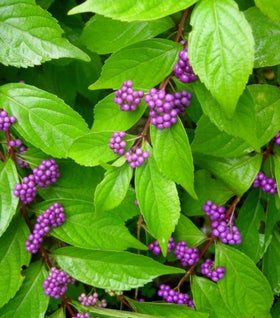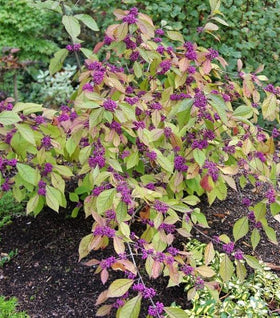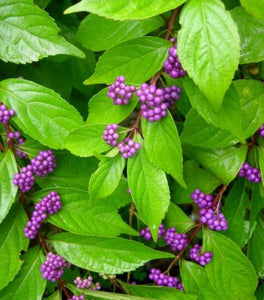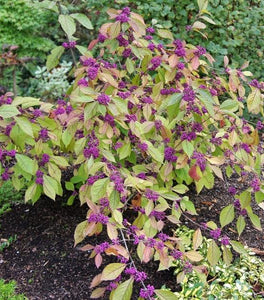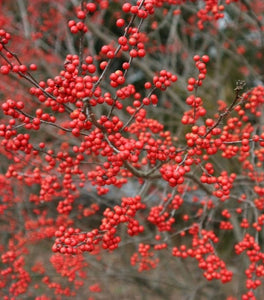Images Depict Mature Plants
Purple Pearls Beautyberry Shrubs for Sale Online
Purple Pearls has a distinctive upright habit, which saves space in the landscape and makes them perfect for smaller gardens.
Plant Purple Pearls Callicarpa in full sun for best color and highest quantity of flowers and berries. Purple Pearls® beautyberry doesn't require much pruning, but can be cut back in spring if desired. In zone 5 and 6, the plant may die back to the ground in cold winters but will resprout and grow, flower, and fruit well that same year.
| Hardiness Zone: | 5-8 |
|---|---|
| Mature Height: | 4 to 5 feet |
| Classifications: | Broad leaved deciduous shrub, late Spring flowering |
| Sunlight: | Full Sun to part sun |
| Habit: | Upright, rounded, densely branched |
| Flower Color: | Pink flowers in summer turning to purple fruit. |
| Foliage: | Medium green turning yellow in the fall |
| Pruning Season: | Late Winter to Early spring, promotes increased branching and more flowers |
| Soil Condition: | Any well drained soil |
| Water Requirements: | Water well until established |
| Uses: | Extremely attractive when used as a focal point in the mixed border, mass planting, or a specimen planting. Provides nectar sources for pollinators |
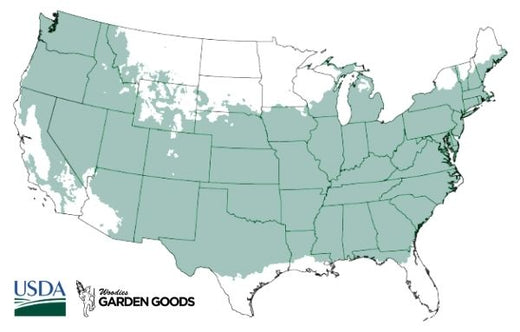
How to Care for Purple Pearls Beautyberry
Be sure to read our planting instructions to ensure a healthy and happy plant for years to come!
Planting Purple Pearls Callicarpa:
We suggest when planting your newly purchased Purple Pearls Callicarpa plants that you dig a hole twice as wide as the root system but not deeper. Depending on the quality of your existing soil you may need to add a locally sourced compost or topsoil to the back-fill soil. We do not recommend using straight topsoil or compost as a back-fill soil because more times than not these products will retain entirely to much moisture and will cause the root system to rot. Adding compost or topsoil will help the young feeder roots of Purple Pearls Callicarpa to spread through the loose, nutrient rich soil, much easier than if you used solely the existing soil which more times than not will be hard and compacted. The most common cause of plant death after transplanting is planting the new plant to deep. That is why we do not recommend planting in a hole any deeper than the soil line of the plant in the pot. A good rule is that you should still be able to see the soil the plant was grown in after back-filling the hole.









